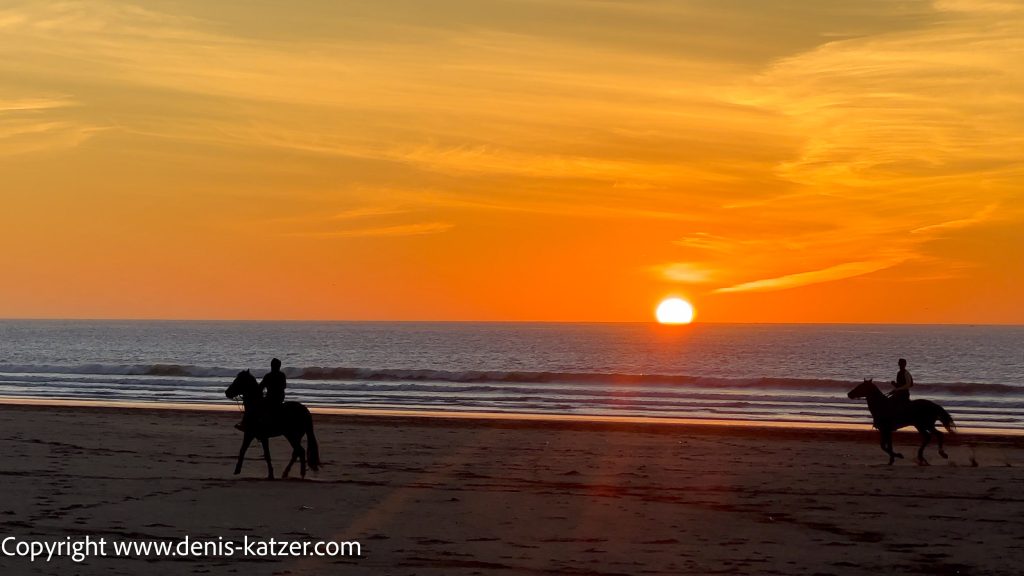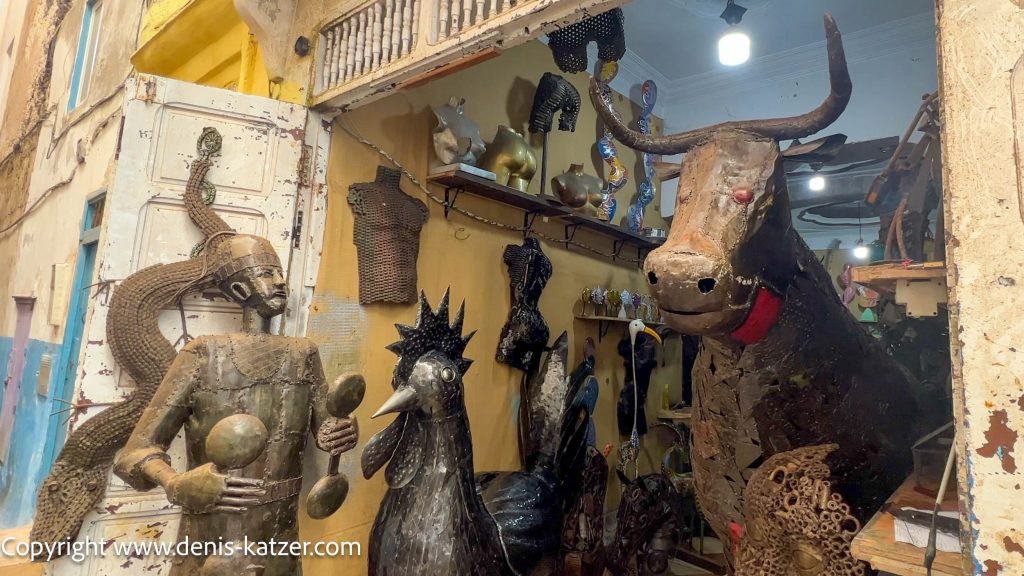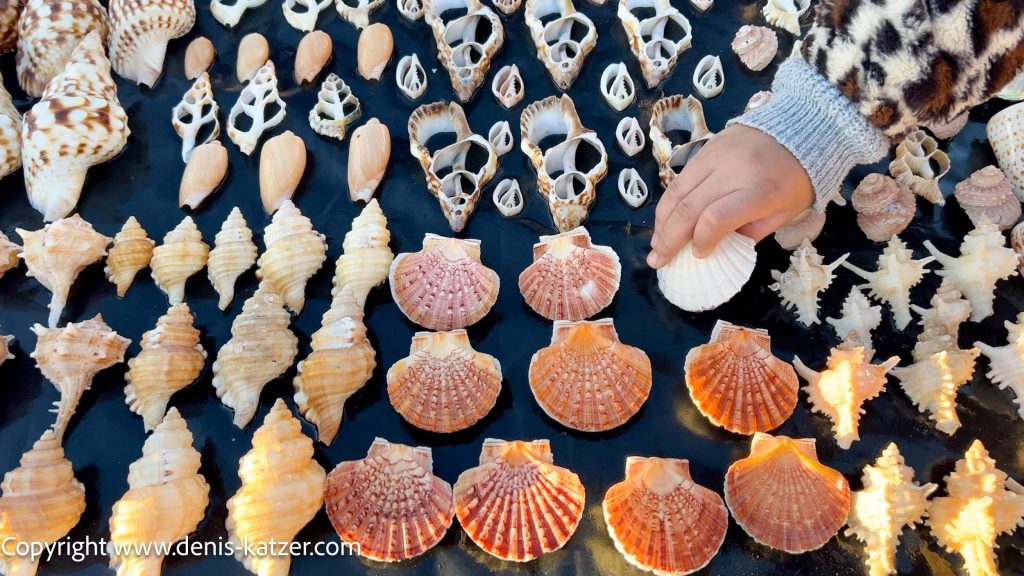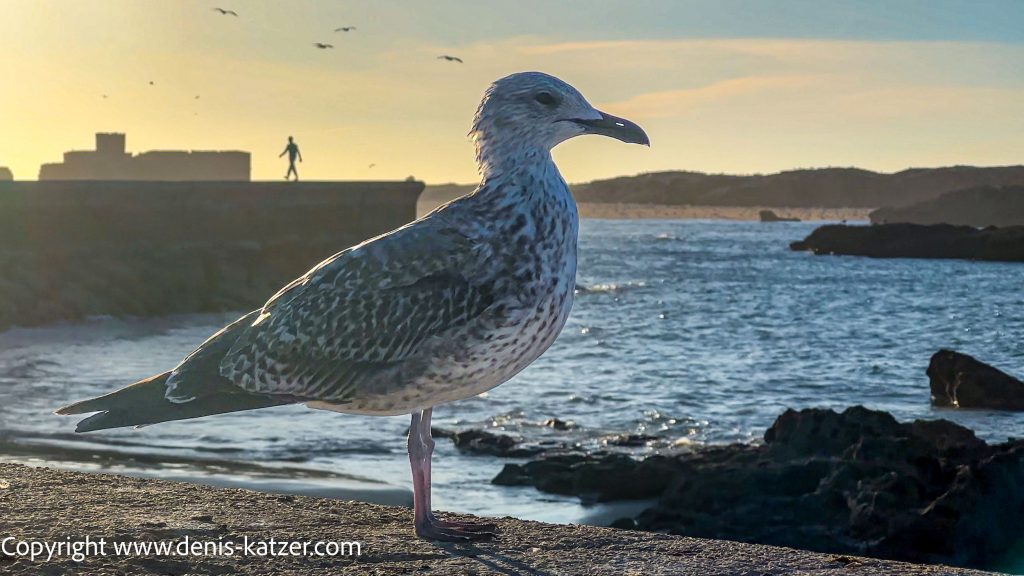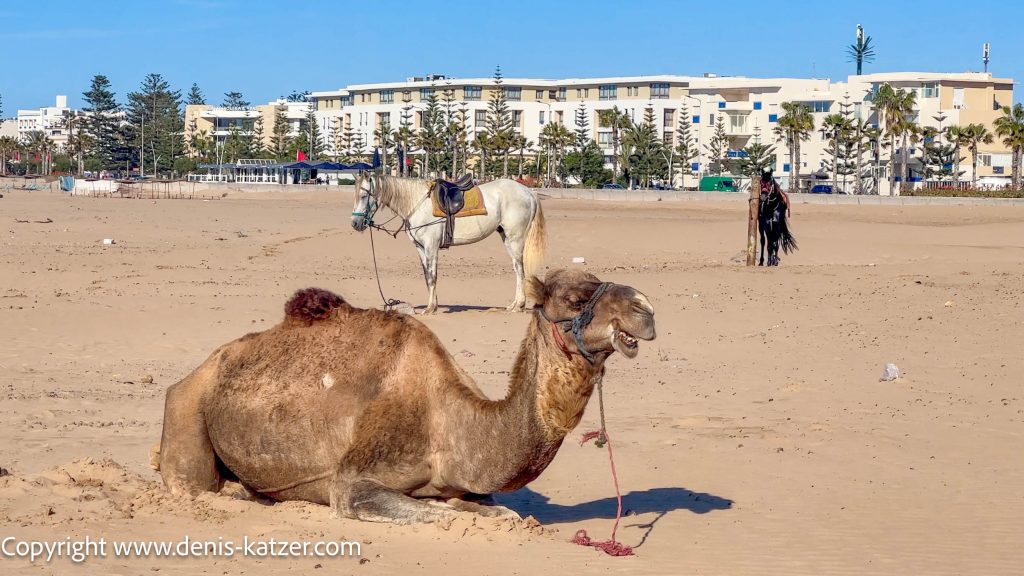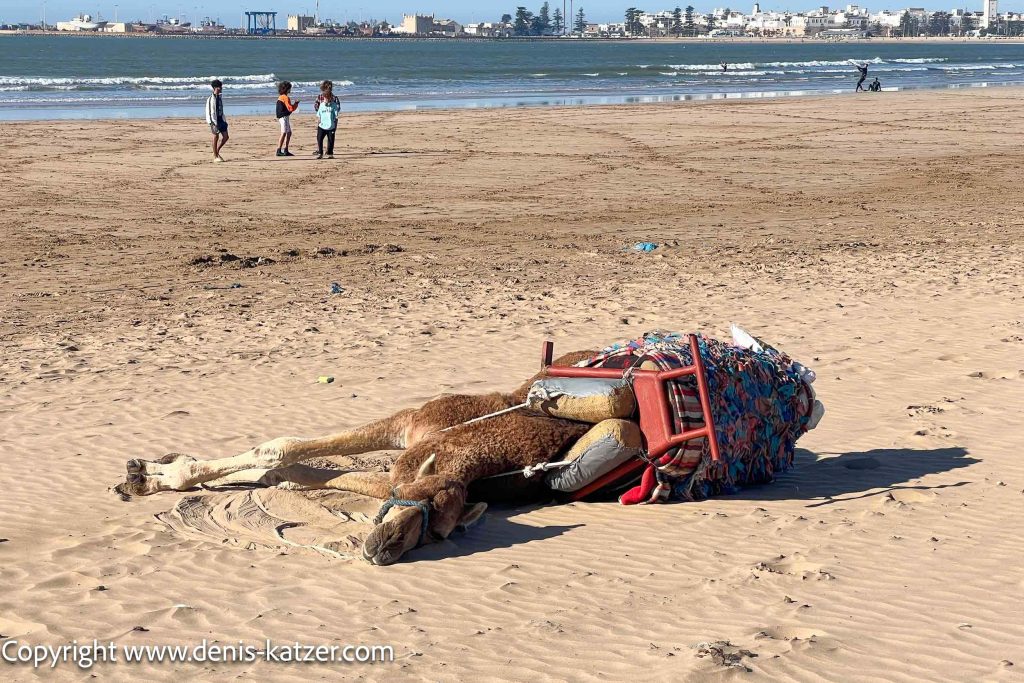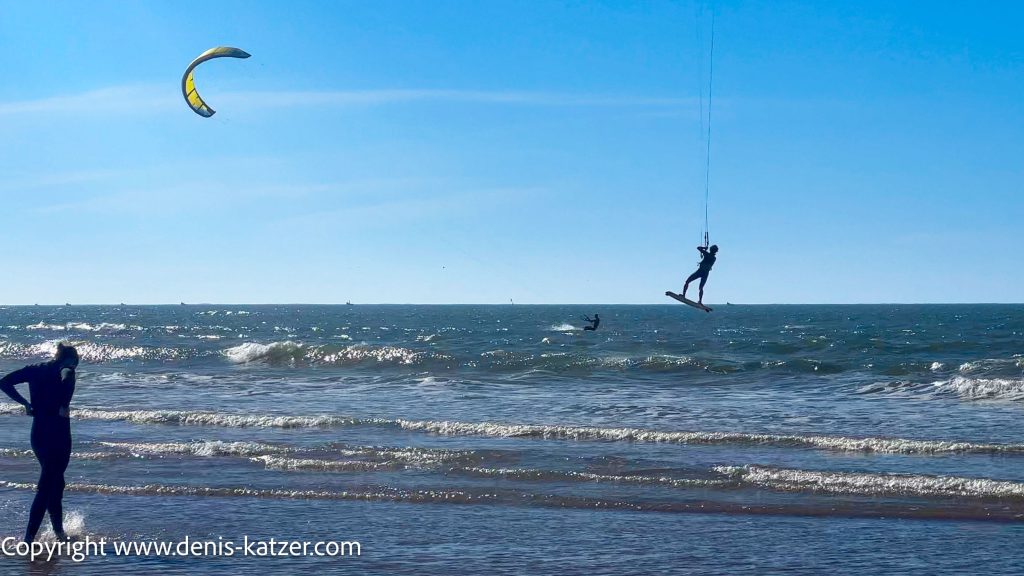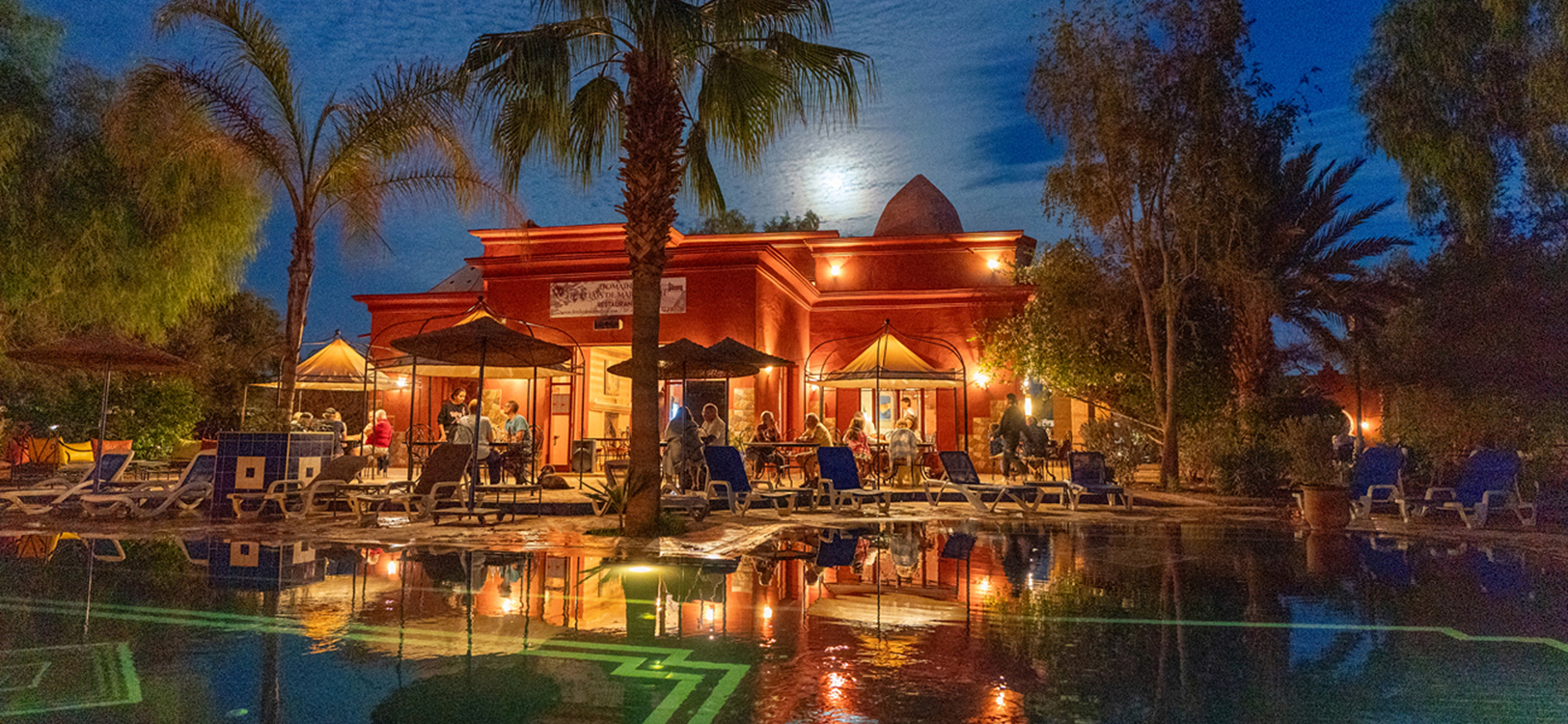
The blue and white fishing town of Essaouira
N 31°21'03.9" W 009°47'39.6"
Day: 365
Camp 65
Country: Morocco
Place: Essaouira then on to Camping Kaouki Beach
Latitude N: 31°21’03.9″
Longitude W: 009°47’39.6″
Kilometers per day: 45 km
Total kilometers: 8209 km
Height 10 meters
Temperature day max 22°
Night temperature: 14 °
Overjoyed, we leave the campsite near Marrakech behind us after almost two months.
After a long break from driving, busy traffic circles are once again a challenge for us. The high traffic density, unpredictable driving behavior, occasional lack of compliance with traffic rules and the presence of pedestrians, cyclists and donkey carts increase the risk of accidents. We navigate carefully, patiently and, above all, defensively through the sometimes confusing crowd.
As we follow the well-maintained N8, we experience a scenic route that takes us past the edge of the Agafay stone desert, among other things. The barren landscape flits past us and offers breathtaking views.
We pass a number of villages that offer us an insight into traditional Moroccan life. Some of them are surrounded by a picturesque backdrop and exude a tranquil atmosphere. Some are known for their craftsmanship, their historical significance or their agricultural products, such as olive and argan oil, which can be bought cheaply here.
The sky is cloudy today and interspersed with unconventional clouds. Strong gusts of wind carry Sahara dust and surround the houses and the landscape with a strange light. It is well known that on some days visibility is so limited that you can barely see your hand in front of your eyes, especially during spring and fall.
Fortunately, today’s wind is not strong and we make unhindered progress.
We reach the picturesque, blue and white fishing town of Essaouira, whose fortress walls and coastal cliffs are battered by the surf of the Atlantic. As previously announced, we can’t find a parking space here, so we park in the spacious parking lot of a supermarket and make our way to the historic medina, which was declared a UNESCO World Heritage Site in 2001.
Despite their individual characteristics, the medinas in Morocco have several common features such as historic city centers, which often have a long history and played an important role in the development of the country.
Most medinas are also surrounded by city walls whose well-preserved gates or entrances regulate access to the medina.
They are also a labyrinth of narrow alleyways lined with traditional souks and markets selling everything from spices to handicrafts and clothing.
In addition, characteristic architectural features such as traditional riads, mosques, mausoleums and historic buildings with ornate decorations and tile work characterize the medinas.
Even after numerous visits to such medinas, we are still fascinated by the exotic hustle and bustle and the melting pot of different cultural influences such as Arabic, Berber, Jewish and European.
The medina of Essaouira is also known for its crafts and handicrafts, including wood carvings, ceramics, carpets and metalwork. The latter is an important element of local craftsmanship. This metalwork can include a variety of items, including intricate lanterns, ornate wrought ironwork such as grilles and gates, traditional teapots, bowls, trays and other decorative items.
The metal craftsmen in the medinas often use techniques such as forging, engraving, chasing and chasing to create complex and detailed designs. These works are often passed down from generation to generation in family businesses and can feature traditional Moroccan patterns and motifs such as geometric shapes, arabesque decorations and floral designs.
Compared to the medina in Marrakech, it is quite tranquil here. Here we are not almost run over by motorcycles and cargo bikes, but can stroll through the narrow streets in a relaxed maritime atmosphere. These catch the wind from the Atlantic and ensure pleasant ventilation, which is why Essaouira is nicknamed “The Windy City”.
While we enjoy the life, the smells and the strangeness of the medina, we think about the important Gnaoua World Music Festival, which takes place here every year in June. It is one of the most famous music festivals in Africa and attracts thousands of visitors from all over the world. We would like to experience the traditional Gnaoua music, which has its roots in African spiritual traditions and combines elements from Berber, Arabic and African cultures. Maybe we’ll be lucky on our next trip to Morocco?
In 1506, the Portuguese under King Manuel I built a fort on the Atlantic. They christened the present-day city of Essaouira Mogador. At times, the town also served as a hideout for pirates.
The former Magador became an important port and trading center after the closure of the port in Agadir in 1765. Numerous Jewish merchants settled in the city. In the 19th century, Magador dominated 40% of the country’s overseas trade. Caravans from Timbuktu brought gold and ivory from the south and exchanged it for leather goods, salt and sugar from Morocco.
The town only took on its present form in the middle of the 18th century. In 1765, Essaouira was built on behalf of the Alawid Sultan Sidi Mohammed Ben Abdallah with the support of the French fortress architect Théodore Cornut as a rival port to Sale and Agadir.
Fishing port of Essaouira
We reach the port of Essaouira, where we can experience the fascinating history of trade, adventure and cultural exchange at first hand. Since its foundation in the 18th century, this port has served as a central port of call for ships from all over the world, bringing precious goods and ideas across the seas.
Even before the sun rises above the horizon, the first fishing boats set out to make their catch of the day. The salty sea air mixes with the call of the seagulls as the fishermen cast their nets to catch fresh fish for the market.
During the day, the hustle and bustle in the harbor reaches its peak. We watch the hustle and bustle, listen to the screeching of the seagulls, and in our imagination we can literally see how merchant ships from distant lands, laden with spices, silk, ivory and exotic goods, dock here while the traders unload their precious treasures.
People from different cultures once met here to do business, exchange stories and make new connections.
Today, the port of Essaouira embodies both the city’s rich history and its vibrant present. Despite the changes over the centuries, it remains a symbol of trade, culture and the boundless beauty of the ocean.
In the evening, as the sun slowly sinks over the horizon, a calmer atmosphere returns to the harbor. The boats are moored and the fishermen bring their catch ashore. The lights of the lanterns are reflected in the calm water, while the sounds of the city gradually fade away.
After a wonderful day in the medina and the harbor, we sit in one of the many beach cafés and watch the kitesurfers who have come from all over the world to ride the waves. The conditions are considered perfect, as the waves are moderate to large but not as aggressive as at some other well-known surf spots in Morocco.
We sit quietly, wrapped in the warm Atlantic breeze, while the sun slowly sets and bathes the sky in bright colors. We let ourselves be enchanted by the relaxed atmosphere and enjoy the moment to the full. As night falls and the sun disappears behind the horizon line, we head back to our Terra Love and look forward to the upcoming journey through the Western Sahara.
Watch the video and let yourself be whisked away to another world.
Here is the link to the video:
